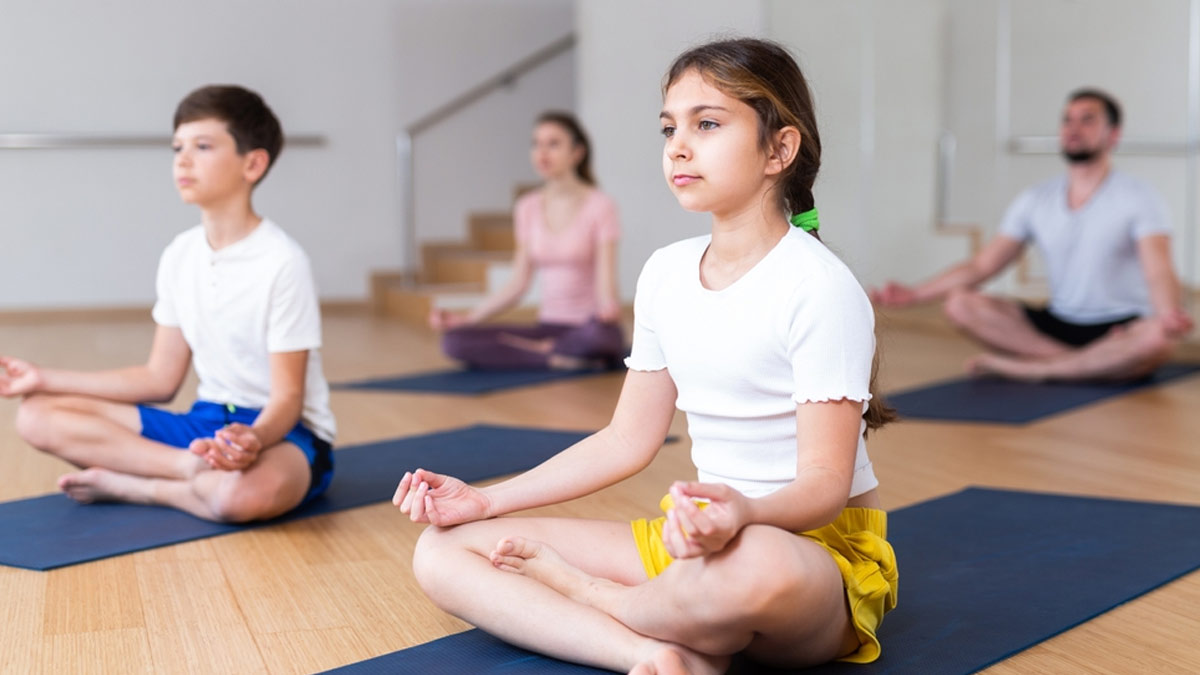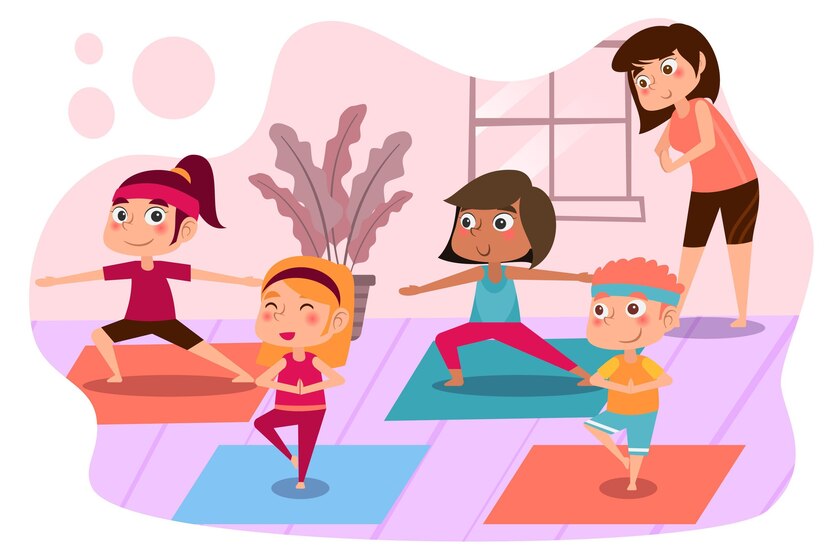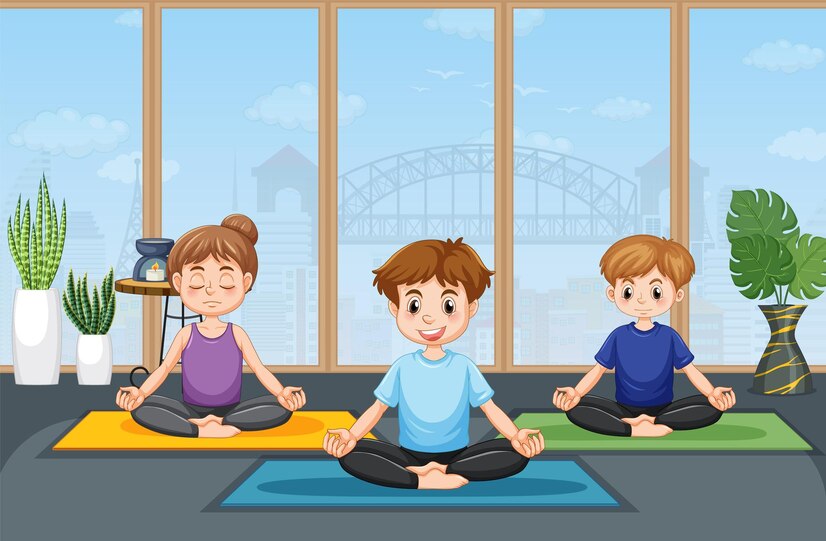
International Yoga Day 2024: Fun And Easy Yoga Asanas For Children Of All Age
Today is the International Day of Yoga which is celebrated every year on June 21 to commemorate the ancient Indian practice. It is essential to add Yoga to our daily routine for infinite health benefits. This holistic discipline can assist you in staying fit through holistic methods for mental and physical well-being. Yoga is also beneficial for expanding focus and enhancing spiritual gain. Hence, it is essential for not only adults but also children to indulge in this discipline. However, due to their fickle-mindedness and playful natures, most children avoid staying on the Yoga mat practising asanas for their fitness.
To find a solution to this, we spoke to Dr Swathi Reddy (PT), Consultant Physiotherapist and certified diet counsellor, and MIAP at Motherhood Hospitals, Bengaluru. She recommends that Yoga helps children during their rapidly growing years for a sound brain and thriving body. She has curated some easy-to-follow yoga asanas for toddlers, early childhood, middle childhood, and early teens.
Toddlers (Ages 2-4)
The tender age between two and four invites playfulness and curiosity in children. This age group has a fleeting attention span and enjoys mischievous activities. To grab their attention, you must engage them in simple and playful Yoga asanas and present them creatively. Here are some Yoga asanas to make them try:
Animal Poses (Cat-Cow Stretch)
Get on your hands and knees and alternatively arch the back like a cat and straighten it like a cow. Make it creative and children-friendly by adding moo and meow sounds.
1
2
3
4
Tree Pose
Stand on one leg, fold and place the other foot above the knee area of the other leg, and balance your body on one leg. Pretend to be a tall tree and sway to make the asana fun for the little ones.
Butterfly Pose
Sit with the soles of the feet touching each other with knees apart. Swing your legs like wings to enjoy the flow.

Early Childhood (Ages 5-7)
Children in this age group are moving toward another stage of physical and mental development. Dr Reddy says, “For early childhood, the routine should include more elements of pretend play and the beginning of balance elements.” Here are some Yoga asanas to try:
Sun Salutations
Introduce a simple practice by referring to asanas as mountains, forward fold, half-bend, and step back to plank followed by the downward dog. Make it fun by telling them to catch the Sun through the Yoga flow.
Warrior Pose I
Place one foot back, bend the front knee, and raise your arms above the head. Tell them to imagine they are strong warriors.
Warrior Pose II
From Warrior I, move your hips and arms sideways and pretend to be a superhero.
Cobra Pose
Lay flat on the stomach, lifting the upper part of the body on hands and knees.

Don't Miss: International Yoga Day 2024: Yoga Expert Tips On Boosting Energy, Improving Heart Health And Vitality
Middle Childhood (Ages 8-10)
Dr Reddy says, “At this stage, Yoga exercises can be more formal and would involve strength and flexibility development.” Here are some asanas she advises:
Sun Salutation Sequence
Add asanas like plank pose, chaturanga, upward-facing dog, and downward-facing dog to develop concentration and muscle (Full Body Workout For Muscles) development.
Eagle Pose
Place one leg over another, slightly bend your knees, and wrap your arms together. Hold and balance for better results.
Double Boat Pose
Sit facing a friend or family member, holding hands, pressing feet together, and lift your legs and cross them to form a V.

Early Teens (Ages 11-13)
“For early teens, we can introduce and explain the concept of mindfulness, new and complex postures, and relaxation methods,” advises Dr Reddy. Here are some asanas to practice:
Plank Variations
Standard plank, side plank, and forearm plank are basic exercises for strengthening the core muscles.
Child’s Pose
Dr Reddy instructs, “Kneel, sit with heels touching your bottom, with legs tucked, and stretch hands forward. Place the forehead flat on the ground to achieve a state of relaxation.”
Guided Meditation
Wrap up the routine with deep breathing exercises and lead your children through positive and calming thoughts.

Dr Reddy says, “Yoga can be introduced as part of children’s schedule to ensure that they embrace the discipline at an early age making it a lifetime habit for healthy living. Several fun routines range from fun and playful animal movements for toddlers to graceful flowing movements for teens ensuring the activities are both fun and helpful for the different development stages of the child. Thus, the inclusion of yoga into the child’s daily routine assists parents and teachers in promoting a child’s physical and mental health and enabling a child to achieve the emotional stability required to lead a healthy life.”
If you liked this story, stay tuned to HerZindagi for more!
Herzindagi.com is Jagran New Media's gender and lifestyle vertical, catering to women of all age groups, helping them remain updated, on-trend and aware. To improve our performance and understand our readers' interests better, we have created this poll. This will take 2 minutes of your time, do help us out. Click here to fill out the form.
Image courtesy: Freepik
Also watch this video
Herzindagi video
1
2
3
4